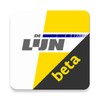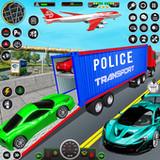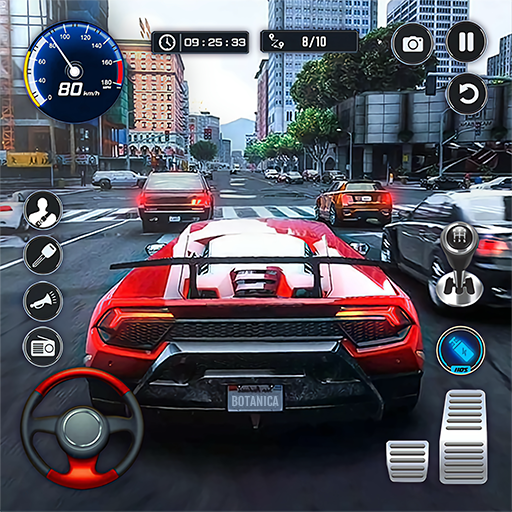De Lijn16.4.5


Rating

Genre
GAMES

Size
166.24 MB
Version
16.4.5
Update
Jul 16 2024
De Lijn pour Android. Download now!
 Download
Download
The De Lijn app serves as a comprehensive travel companion for planning multimodal journeys within Flanders. Offering the capability to map out routes from point A to B, this platform incorporates services from De Lijn, MIVB, NMBS, and TEC. Users can set alerts to notify them when to disembark and activate routes for turn-by-turn navigation, complete with real-time updates on unexpected disruptions.
Simplify travel by purchasing digital tickets directly within the app, including the m-daypass and m-ticket. Saving frequently used routes and stops adds convenience, and with the feature to find nearby stops swiftly, the experience becomes even more user-friendly. Users can keep their favorites in sync with their website account, ensuring a seamless navigation experience.
De Lijn, the Flemish public transport company, operates an extensive network of buses, trams, and metros throughout Flanders, Belgium. Navigating this network efficiently requires understanding its intricacies, from route planning and ticket purchasing to real-time information and potential disruptions. This comprehensive guide aims to equip both residents and visitors with the knowledge necessary to utilize De Lijn effectively.
Understanding the network's structure is crucial. De Lijn's services are categorized by transport mode: bus, tram, and metro. Buses cover a vast area, connecting cities, towns, and even smaller villages. Trams primarily operate within larger cities like Antwerp, Ghent, and Brussels (in collaboration with STIB). The metro system, currently exclusive to Antwerp, provides rapid transit within the city. Each mode operates on specific routes, identified by numbers and sometimes letters, which follow defined paths and schedules.
Route planning is essential for a smooth journey. De Lijn provides various tools to assist with this process. The official website and mobile app offer route planners that allow users to input their starting point and destination. The system then generates optimal routes, displaying travel time, transfers, and platform information. Printed route maps are also available at various locations, providing a visual overview of the network. Consulting these resources beforehand helps avoid confusion and ensures timely arrival.
Ticketing options cater to different travel needs. Single-journey tickets can be purchased on board buses and trams, although this method is often more expensive. Pre-purchased tickets, available at kiosks, De Lijn shops, and select retailers, offer cost savings. Multi-journey cards, such as the Lijnkaart, provide further discounts for frequent travelers. Subscription options, ideal for regular commuters, offer unlimited travel within a specified zone. Understanding the various ticket types and choosing the most suitable one can significantly impact travel expenses.
Real-time information is invaluable for managing travel time. De Lijn's website and app provide real-time updates on vehicle locations and potential delays. Electronic displays at bus and tram stops often show estimated arrival times, allowing passengers to adjust their plans accordingly. This information is particularly useful during peak hours or unexpected disruptions.
Dealing with disruptions requires flexibility and awareness. Traffic congestion, road closures, and unforeseen incidents can impact service schedules. De Lijn communicates service disruptions through its website, app, and social media channels. Staying informed about these disruptions allows passengers to find alternative routes or adjust their travel plans accordingly. Familiarizing oneself with alternative transportation options can also be beneficial in such situations.
Accessibility is a key consideration for De Lijn. Efforts are made to ensure that the network is accessible to people with disabilities. Low-floor buses and trams facilitate easy boarding and disembarking for wheelchair users. Audio announcements and visual displays provide information for visually and hearing-impaired passengers. Dedicated spaces for wheelchairs and strollers are available on most vehicles. Information on accessibility features for specific routes can be found on the De Lijn website.
Understanding local customs and etiquette contributes to a positive travel experience. Queueing etiquette is generally observed at bus and tram stops. Offering seats to elderly passengers, pregnant women, and people with disabilities is considered courteous. Keeping noise levels to a minimum and avoiding littering contributes to a pleasant environment for all passengers.
Utilizing De Lijn effectively requires a combination of planning, awareness, and adaptability. By understanding the network's structure, utilizing route planning tools, choosing appropriate ticketing options, staying informed about real-time information and disruptions, and respecting local customs, passengers can navigate the Flemish public transport system with ease and efficiency. Whether traveling for work, leisure, or daily commutes, De Lijn provides a vital service connecting communities throughout Flanders. By mastering its intricacies, passengers can unlock the full potential of this extensive and valuable network.
4 / 5 ( 892 votes )









